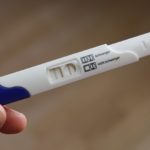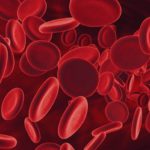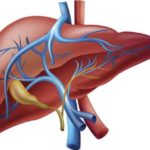What is autoimmune disease Hashimoto’s?
Chronic Lymphocytic Thyroiditis was first described by Hakaru Hashimoto, a Japanese doctor in 1912 as struma lymphomatosis—a transformation of thyroid tissue to lymphoid tissue. It is the most common inflammatory condition of the thyroid gland.
The pathogenesis of thyroiditis
Hashimoto’s is an autoimmune disease in which the body produces antibodies against thyroid cells. This occurs due to the activation of helper-T lymphocytes which act against thyroid antigens. These activated helper cells, in turn, stimulate cytotoxic lymphocytes which cause the destruction of normal thyroid cells. Many autoantibodies are also produced which activate the complement pathway resulting in blockage of thyroid-stimulating hormone receptors (TSH-R). These antibodies act against thyroglobulin, thyroid peroxidase enzyme, TSH-R, and iodine transporter on the cell membrane. The natural killer cells in the circulation also are responsible for thyroid cell damage. All these changes result in a reduction of active thyroid tissue and lead to hypofunction of the thyroid gland. Programmed cell death or apoptosis is also seen in Hashimoto’s thyroiditis.
Chronic thyroiditis also has been associated with increased intake of iodine and iodine-containing medications like amiodarone and seaweed. The hereditary predisposition of this condition is supported by the evidence of an increased incidence of thyroid autoantibodies in first-degree relatives of patients with Hashimoto’s thyroiditis.
What happens to the thyroid gland?
There is a diffuse through mild enlargement of the thyroid gland. It has a firm and nodular feel. Microscopic examination shows a diffuse infiltration by the immune cells like lymphocytes and plasma cells. The secretory follicles of the thyroid are small with a lesser amount of colloid than normal. The connective tissue is increased due to chronic inflammation.
Symptoms of Hashimoto’s disease
Hashimoto’s thyroiditis is also more commonly seen in women, being 10 to 20 times commoner than males. It usually affects adults between ages 30 and 50 years. The enlarged thyroid or goiter is painless and many times the patient is unaware till it is brought to the notice by an observer or a physician. About 5% of patients may present with features of increased thyroid hormone activity in the early part of the disease. This occurs due to the release of preformed thyroid hormone. Later on, these patients develop hypothyroidism. The features of toxicosis which is usually mild include tiredness, heat intolerance, weight loss, excessive appetite, and palpitations.
Patients with hypothyroidism present with mental lethargy, cold intolerance, weight gain, constipation, menstrual disturbance, and carpal tunnel syndrome. The clinical examination reveals bradycardia, cold extremities, dry skin, periorbital puffiness, hoarse voice, slow movements, and delayed relaxation phase of ankle jerks. These patients may have a family history of other autoimmune diseases. Rarely, some of these patients may develop malignant lymphoma or papillary carcinoma of the thyroid.
Diagnosis
As patients eventually develop hypothyroidism, the blood levels of thyroid hormones are low or below normal. TSH levels are elevated as are circulating levels of autoantibodies described above. A fine-needle aspiration (FNAC) shows abundant lymphocytes. Sometimes lymphoma may co-exist and requires surgical biopsy in the form of lobectomy. The chances of lymphoma in this condition are 80 times higher than in the general population.
Treatment
Replacement therapy with thyroid hormones is required in cases presenting with hypothyroidism. The aim is to maintain normal levels of TSH in the blood. A full replacement dosage of thyroxine should be given. Treatment is advised especially for middle-aged patients with cardiovascular risk factors such as hyperlipidemia or hypertension and in pregnant patients. Though most of the patients are managed medically, surgery may be indicated for suspicion of malignancy or for goiters causing compressive symptoms or cosmetic deformity.
Hashimoto’s thyroiditis is an autoimmune disease with a risk of developing hypothyroidism and cancer. If detected early, replacement therapy helps in the prevention of complications of hypothyroidism. If there is a suspicion of cancer, prompt diagnosis and surgery may be lifesaving.




























